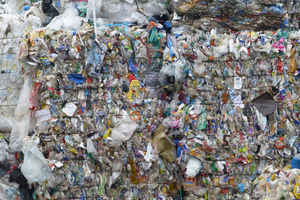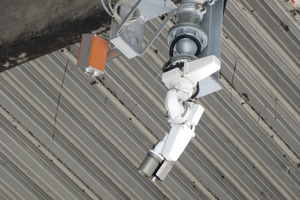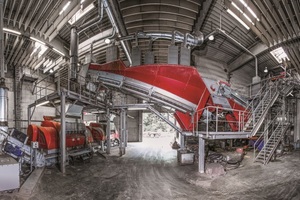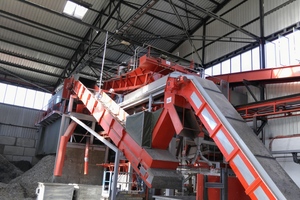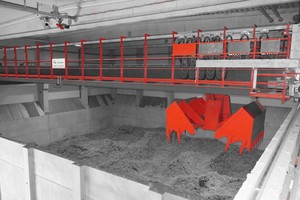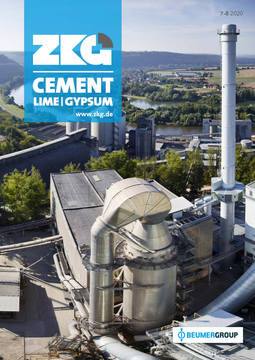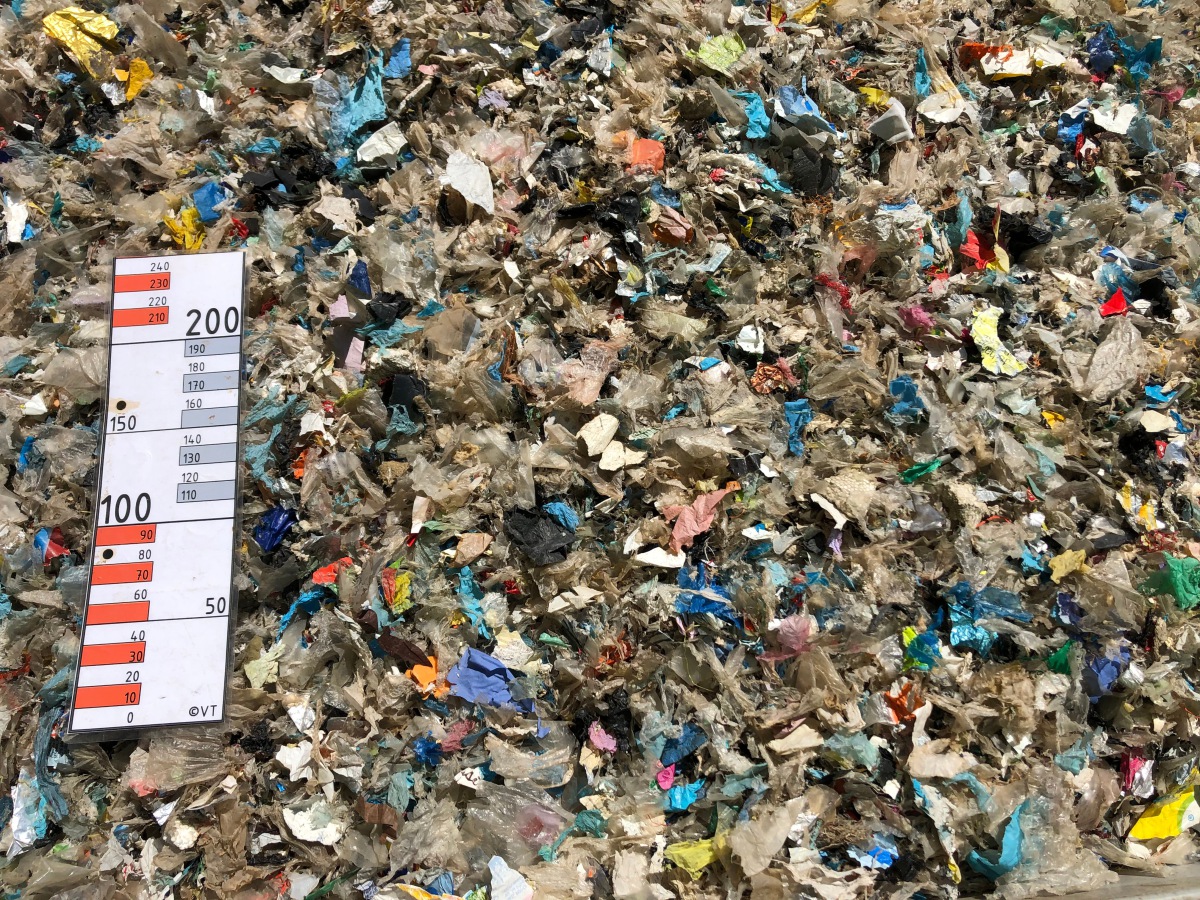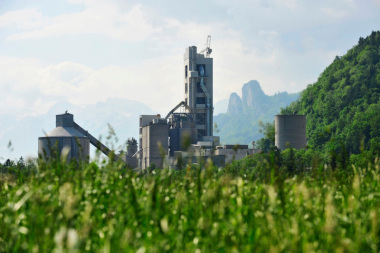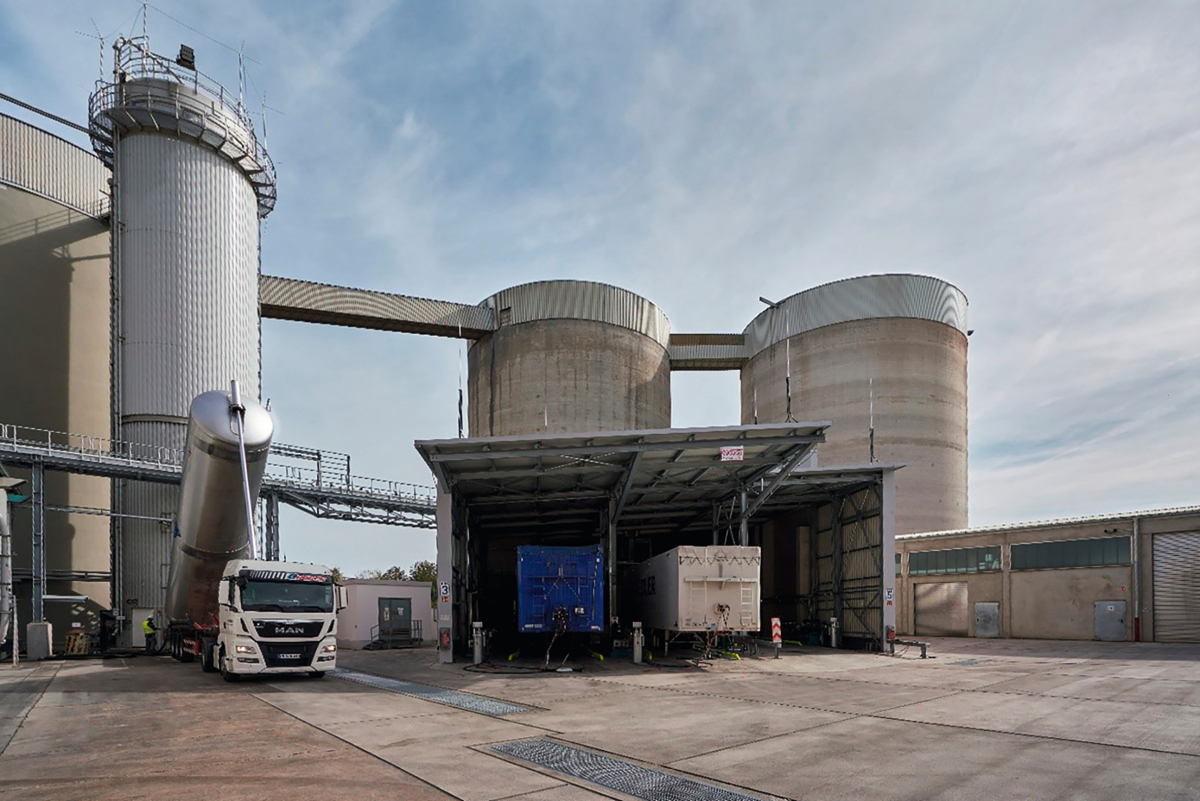Fire protection system with infrared thermography for substitute fuel plants
The aim of fire protection is, first and foremost, to prevent a fire from starting. Better yet is detecting fire hazards early before a fire breaks out, and fighting potential sources of fire quickly and in a targeted manner before major damage can occur. Fire protection systems which are based on infrared thermography offer significant advantages in this regard. Numerous substitute fuel plants successfully use the Pyrosmart system from Orglmeister Infrarot-Systeme.
When processing inflammable materials, fire protection naturally plays an important role. Substitute fuel processing plants, which are often located in close proximity to cement works, are a particular challenge in this regard. The input material is not only inflammable, but also often contains components which could encourage a fire to break out. The environmental conditions are also a challenge.
Substitute fuel for cement works
Substitute or secondary fuel is fuel that can be manufactured from waste, for example. In this way, cement works save valuable primary fuels, such as coal, thus reducing CO2 emissions. In Western Europe, substitute fuels used in cement works satisfy between 50% and 70% of the energy requirement. The input material for substitute fuel treatment plants is waste from households, such as plastic packaging from the German dual system, and commercial waste, which cannot be fed back into the materials recycling cycle (lead picture). Depending on its type, the delivered input material is crushed and passes through various systems to remove impurities. This removes magnetic and non-magnetic metals, as well as non-flammable materials. Parts made from PET or PVC, which are easily recyclable, are also separated out. The material is then crushed again and stored until its removal. The substitute fuel is crushed to different grain sizes depending on the requirements. For cement works, so-called high-calorific fractions are primarily used, the calorific value of which is approximately 220000 kJ/kg of material and the grain size of which is up to 30 mm.
Fire hazards during storage and processing
When handling substitute fuel, fire hazards cannot generally be avoided. This is the case for storing input materials and the finished substitute fuel, as well as for the various processing procedures. For example, sparks produced when separating out metals could cause materials to ignite. Batteries that may be included in the metal fraction pose a particular risk. In some circumstances, these can cause a short circuit, which may in turn cause a fire. As it is not always completely clear which materials the input material contains, there is always a risk of spontaneous ignition. The open storage of inflammable materials – both of the input material and the finished substitute fuel – is a further source of risk.
Conventional fire alarm systems that were previously standard are largely based on a smoke aspiration system. Due to high levels of dust pollution, environmental conditions in substitute fuel processing plants are challenging; these systems therefore require a great deal of maintenance. The main disadvantage is that, in halls with high ceilings, smoke aspiration systems are only activated when a fire has already broken out. A considerable amount of damage may therefore be caused before firefighting measures are taken.
Infrared technology detects fires early
An early fire-detection system based on infrared technology is significantly more advantageous. Pyrosmart, Orglmeister Infrarot-Systeme provides just this kind of system, with a high-resolution infrared camera which continually scans the area to be monitored. Panorama thermal imaging is initiated in this way and used, along with the video images from a second camera, to create a full-screen video panorama image. The thermal image provides highly precise and accurate temperature information about the entire monitored area. The panoramic video image quickly and clearly identifies the hazard area. The images of the detection area can be displayed full-screen in a control room. The operator can detect the temperatures of the various areas at any time using a false colour display of the infrared panoramic image. The system also indicates the location currently exhibiting the highest temperature in the monitoring area, thereby giving the operator a quick overview of possible fire hazards. The patented Pyrosmart system is mounted onto a special highly precise tilt and swivel drive, which allows it to accurately monitor even very large areas in one complete view. Thanks to the infrared technology (see box text), smoke and dust cannot lead to incorrect measurements in the monitoring area. To prevent the lenses of the two cameras from becoming dirty, there is a monitored compressed-air flushing system integrated in the housing.
Targeted 3D firefighting
The system can do a great deal more than just record and display temperature values. If the temperature exceeds a specified limit at one location, an alarm is triggered. This alarm is raised long before a smoke aspiration system would be able to detect the fire. The system works even more securely when an automatic extinguishing system is connected. This enables, for example, extinguishers to be installed, which fight emerging fires in a highly targeted way (Figure 1). This is possible because the Pyrosmart system determines the exact position of the emerging fire using 3D spatial data, and uses this information to precisely target the extinguisher at the source of the fire. Thanks to this precisely targeted method of firefighting, the quantity of extinguishing water required is kept to a minimum, meaning that the level of damage caused is also kept to a minimum. With this automation, emerging fires can be fought quickly and effectively before they can spread and cause significant damage. In the event of a fire, the fire brigade can use the extinguishers directly for firefighting upon arrival at the plant. For this, remote controls are available, which allow the extinguishers to be operated manually.
The integrated system control recognises whether a fire does indeed exist or whether there is another heat source within the monitored area. As the exhaust pipes of the wheel loaders used in the input area or of the trucks that deliver the material, for example, can become very hot, care must be taken to ensure that a false alarm is not triggered. To avoid this, it is possible to define attributes of disturbance variables within the system control, which are then not considered in the alarm values thanks to the intelligent software algorithms. Internal pre-alarms can also be defined in the system control that do not immediately trigger the fire reporting process. Operating staff can then be warned about rising temperatures while they are still far below the ignition temperature. Employees are therefore able to react in good time, before a fire breaks out.
Reliable in use
ThermoTeam Alternativbrennstoffverwertungs GmbH in Ehrenhausen in Austria was one of the first companies to use the Pyrosmart system in their substitute fuel processing plant. The plant, which processes around 100 000 t of input material per year, supplies, among others, a cement works located in the vicinity with substitute fuel (Figure 2). A total of three Pyrosmart systems have been monitoring the various areas inside the plant since 2012. Aside from the direct control of the extinguishers, there are also other functions integrated into the system control, such as automatic transmission of the alarm, including panoramic infrared images, to mobile devices. This means that the responsible employees can react quickly when there is a risk of fire breaking out. The operator is very satisfied with the reliability of the system. “The system has already extinguished multiple fires in their early stages in the impurity sorter”, plant manager Josef Kulmer is pleased to report. “Overall, we are certain that large fires can be reliably prevented with the system from Orglmeister.”
Jakob Becker Entsorgungs-GmbH has also had a positive experience with the preventative fire protection system from Orglmeister. “Our processing plant in Sembach was completely destroyed by a fire five years ago”, explains Donald Betz, manager of installation engineering. The company runs a processing plant for commercial waste at their location in Sembach. The part which cannot be fed back into the materials recycling circuit is processed to produce, among other things, substitute fuel for a nearby cement works. A Pyrosmart system monitors the hall in which the input material is delivered and sorted. Here too, the combination with extinguishers ensures that fires are extinguished in their formation phase. Besides the swivelling system, there is also a fixed Pyrosmart camera installed, which monitors the conveyor belt at the shredder output. If an excessive temperature is registered at the conveyor belt, the system reacts immediately. The affected material is re-directed to a so-called fire box (Figure 3). It can be extinguished without any difficulties in this metal container – other material is securely protected from a spreading fire. “We have developed the corresponding control system ourselves”, explains Donald Betz, manager of installation engineering at the company. The whole fire protection concept on which the system is based has been approved by VdS. “It was beneficial that the Pyrosmart System from Orglmeister also has VdS approval now”, emphasises D. Betz. The Pyrosmart systems are maintenance-free, meaning that operating the system at Jakob Becker Entsorgungs-GmbH has been completely straightforward. “Since the new fire protection system has been in operation, it has already prevented at least three larger fires”, explains D. Betz, referring to successful operations at the Sembach plant. Due to the positive experience, the Pyrosmart system has also been installed at two further company locations.
Umweltdienste Bohn GmbH, which operates substitute fuel plants at a total of six locations, is another company working in this field that has implemented the early fire-detection solution. At these plants, segregated waste from the German dual system (DSD) and commercial waste is processed to produce substitute fuel. The company produces over one million tonnes of substitute fuel per year in total (Figure 4). The high-calorific fractions are also used for the cement industry – in some cases, the plants are located right on the company grounds of a cement works, in order to reduce transport costs. “In 2015, the plant at Buseck was the first to be equipped with the Pyrosmart systems and extinguishers”, explains Holger Bruns, Technical Manager at Umweltdienste Bohn. “Until then, there were small fires every now and then.” According to H. Bruns, the storage areas for input and output material pose a particularly high risk, as it is not clear what is contained in the input material. In the worst case scenario, this could lead to spontaneous ignition. In the three halls at Buseck, there are a total of four Pyrosmart systems and five extinguishers installed. The technical manager told us one particular anecdote about the operation of the system. “An engine fire in one of the wheel loaders which move the material in the hall was detected and extinguished by the Pyrosmart system – before the driver had even noticed the fire.” The system for early fire detection has also proved successful at Bohn, where it has repeatedly prevented fires in recent years. It has consequently since been used at nearly every location of the company.
//www.orglmeister.de" target="_blank" >www.orglmeister.de:www.orglmeister.de

